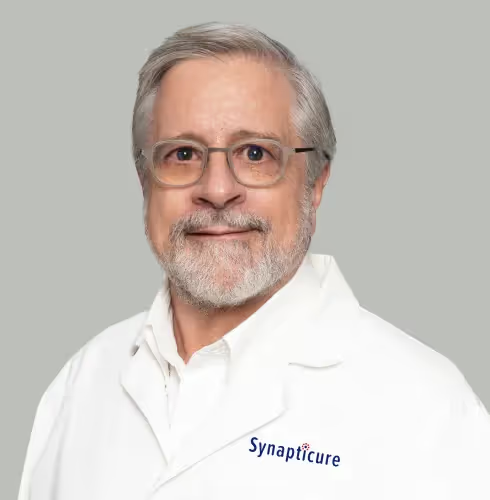Today we’re discussing an advanced treatment option for Parkinson's disease (PD) - Deep Brain Stimulation (DBS). DBS is a surgical procedure used to treat patients with advancing symptoms that are not adequately controlled with medication alone. The procedure involves implantation of a pulse generator–a device similar to a pacemaker–to send electrical signals to areas of the brain responsible for movement and motor control. These signals help regulate abnormal impulses caused by malfunctioning or degenerating brain cells due to conditions such as PD, essential tremor, and dystonia. The DBS system consists of three components: a lead (with small electrodes), an extension wire, and a neurostimulator. The lead is implanted in one of a few specific brain areas; the extension wire travels from the lead, under the skin of the scalp and neck, and connects the lead to the neurostimulator, which is typically placed under the skin near the collarbone.
Who is the Best Candidate for DBS?
DBS isn't suitable for everyone with Parkinson's disease. The best candidates are those who:
- Have had Parkinson's disease for several years
- Continue to respond to Parkinson's medications, but with diminishing windows of benefit (e.g., medications wear off between doses) or severe side effects
- With some exceptions, such as treatment-resistant tremor, most symptoms that do NOT respond to medications will NOT improve with DBS
- Do not have significant memory problems or other mental health conditions such as uncontrolled depression
- Are in good overall health, without major other diseases that may complicate surgery
Outcomes for DBS
DBS is evidence-based and considered a standard of care treatment option in PD. Multiple studies have studied the effectiveness of DBS in managing the symptoms of PD. According to a study published in The Lancet Neurology in 2018, DBS was found to improve motor function and decrease behavioral complications in the 12 months following placement in a specific region of the brain known as the subthalamic nucleus2. A 2020 study by Thomsen and colleagues also showed significant benefit in motor function even 8-15 years after surgery with sustained reduction in medication compared to before surgery.3 Furthermore, preprogramming of the stimulation settings was shown to be effective even in the late stages of PD. Some of the new DBS devices can be programmed remotely, meaning you do not have to go into the clinic for adjustments every time. Other types being studied now actually measure electrical activity, and within set parameters, can make adjustments in the electrical settings as needed to adapt to changing conditions4.
Complications from DBS can include those directly related to the surgical procedure such as infection, hemorrhage/stroke, issues related to the hardware itself, and adverse effects related to stimulation requiring additional adjustments in the electrical settings.
It is important to remember that while DBS can significantly improve symptoms and patients' quality of life, it is not a cure nor does it clearly slow the progression of the disease. Instead, DBS allows a more continuous method of symptom control and possible reduction in medications. To further understand your treatment options, including DBS, speak to your Synapticure care team. We can help you understand whether you might be a good candidate for DBS and discuss the risks and benefits. Each patient is unique and recommendations for treatment depend on your specific symptoms, overall health, and personal preferences. We’re here for you every step of the way.
Image by rawpixel.com on Freepik
- Cagnan H, et al. Emerging technologies for improved deep brain stimulation. Nat Biotechnol. 2019 Sep;37(9):1024-1033. doi: 10.1038/s41587-019-0244-6. Epub 2019 Sep 2. Erratum in: Nat Biotechnol. 2019 Oct;37(10):1237. PMID: 31477926; PMCID: PMC6877347.
- Lhommée E, et al; EARLYSTIM study group. Behavioural outcomes of subthalamic stimulation and medical therapy versus medical therapy alone for Parkinson's disease with early motor complications (EARLYSTIM trial): secondary analysis of an open-label randomised trial. Lancet Neurol. 2018 Mar;17(3):223-231. doi: 10.1016/S1474-4422(18)30035-8. PMID: 29452685.
- Thomsen BLC, et al. Deep Brain Stimulation in Parkinson's Disease: Still Effective After More Than 8 Years. Mov Disord Clin Pract. 2020 Sep 21;7(7):788-796. doi: 10.1002/mdc3.13040. PMID: 33033736; PMCID: PMC7534016.
- https://parkinsonsnewstoday.com/news/smart-dbs-system-will-respond-parkinsons-symptoms/. Accessed May 12. 2023.












.png)


